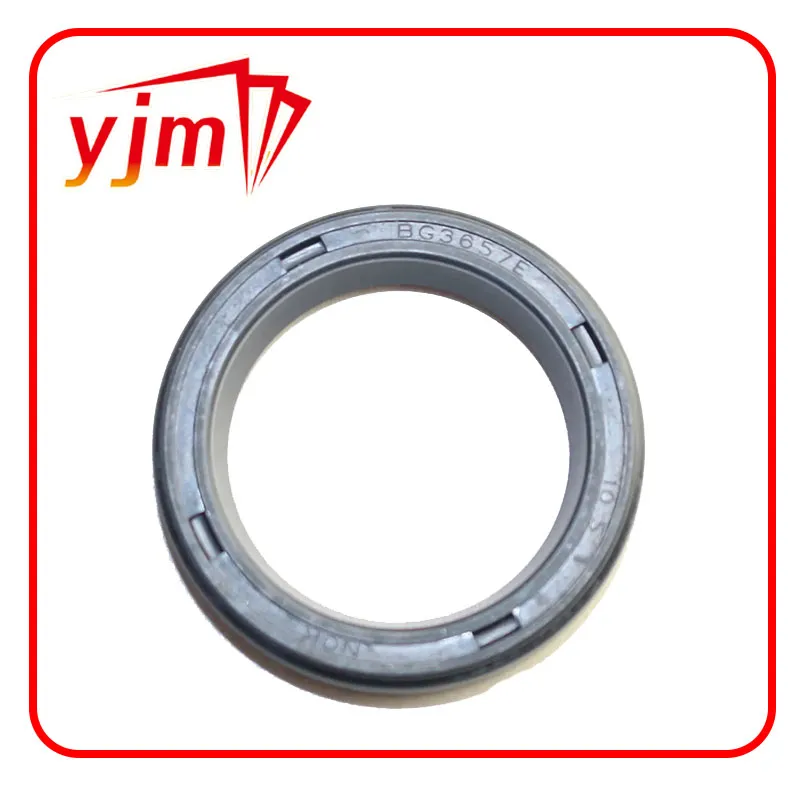Understanding the Importance of Oil O Rings in Sealing Applications and Maintenance
Understanding Oil O-Ring Seals Essential Components of Fluid Sealing Systems
Oil O-ring seals are pivotal components used in various industries, particularly in machinery and automotive applications. These seals are designed to prevent the leakage of fluids, such as oils and fuels, from mechanical systems. The effectiveness of O-ring seals hinges on their design, material composition, and the conditions under which they operate. This article delves into the importance, types, and applications of oil O-ring seals.
What Are O-Ring Seals?
O-rings are circular rings made from elastomeric materials, used to create a seal between two or more surfaces. The shape of an O-ring ensures that when it is compressed between these surfaces, it fills the void, effectively preventing the passage of fluids. The simplicity of their design contributes to their effectiveness in achieving a reliable seal under varying pressures and temperatures.
Importance of O-Ring Seals
Oil O-ring seals play a crucial role in ensuring the efficiency and longevity of machinery. A failure to maintain a proper seal can lead to oil leaks, which not only compromise the performance of the equipment but may also pose serious safety risks and environmental concerns. By containing lubricants, O-rings minimize friction between moving parts, thereby enhancing operational efficiency and reducing wear and tear.
Types of Oil O-Ring Seals
There are several types of O-ring seals designed for specific applications, each tailored to meet different requirements in terms of temperature, pressure, and fluid compatibility. Common materials used for oil O-rings include
1. Nitrile Rubber (NBR) Known for its excellent resistance to oils and fuels, NBR is one of the most widely used materials for oil seals. It performs well in a temperature range typically from -40°F to +250°F (-40°C to +120°C).
2. Fluorosilicone (FVMQ) This material is ideal for applications requiring resistance to both oils and extreme temperatures (up to +400°F or +200°C). It also offers good chemical resistance.
oil o ring seals

3. Viton (FKM) Known for its superior heat and chemical resistance, Viton is preferred in high-temperature applications where oil degradation is a concern.
4. EPDM (Ethylene Propylene Diene Monomer) While not suitable for continuous contact with petroleum oils, EPDM O-rings are excellent for water and steam applications, making them versatile.
Applications of Oil O-Ring Seals
O-ring seals are utilized in an extensive range of applications across various sectors
- Automotive In engines and transmission systems, O-rings prevent oil leaks and ensure that lubricants are contained within the system to reduce friction and wear.
- Hydraulic Systems O-rings are crucial in hydraulic cylinders and pumps, maintaining pressure and preventing fluid loss, which can lead to system failure.
- Pneumatic Systems They are also used in air compressors and pneumatic tools, where they help to maintain air pressure and prevent leaks.
- Manufacturing Equipment Many industrial machines rely on O-rings to keep lubricants contained, thus enhancing their operational efficiency and reducing maintenance costs.
Conclusion
Oil O-ring seals are indispensable components in numerous applications across various industries. By selecting the appropriate material and design, engineers can ensure reliable sealing performance, ultimately contributing to the safety, efficiency, and longevity of mechanical systems. Understanding the critical role these seals play not only aids in effective equipment design but also in troubleshooting leaks and maintaining operational excellence. Whether in automotive assembly lines, hydraulic machinery, or any other domain relying on fluid sealing, oil O-ring seals continue to be a cornerstone of modern engineering solutions.
-
The Ultimate Guide to Car Repair Kits: Tools and Essentials Every Driver Should Own
News Aug.01,2025
-
The Complete Guide to Oil Pan Gaskets: Sealing Engine Leaks the Right Way
News Aug.01,2025
-
Preventing Oil Leaks: A Complete Guide to Oil Pan Gaskets and Drain Seals
News Aug.01,2025
-
Everything You Need to Know About Oil Pan Gaskets and Drain Plug Seals
News Aug.01,2025
-
Essential for Car Owners: How to Use a Car Repair Kit to Deal with Minor Breakdown
News Aug.01,2025
-
Comprehensive Guide to Engine Oil Sump Gaskets and Related Seals
News Aug.01,2025
-
The Ultimate Guide to Boat Propeller Bearings and Trailer Wheel Bearings
News Jul.31,2025
Products categories















